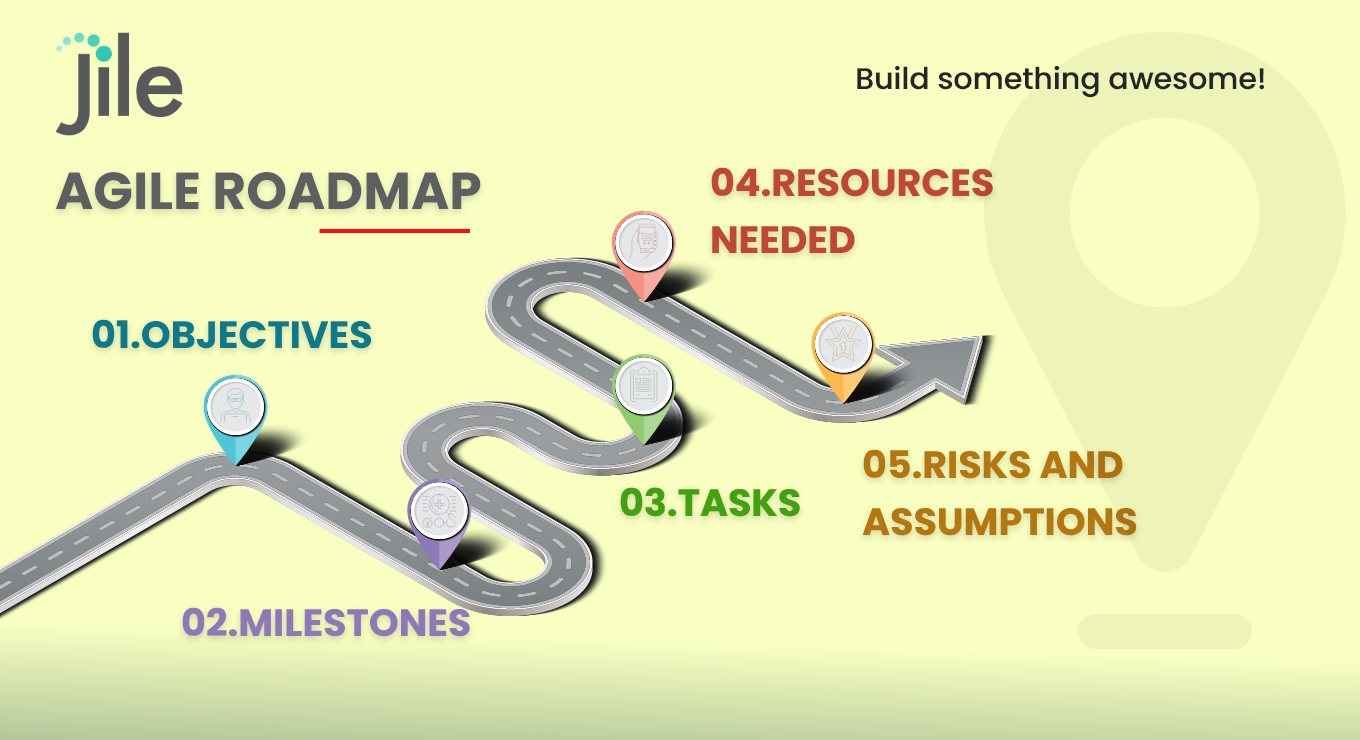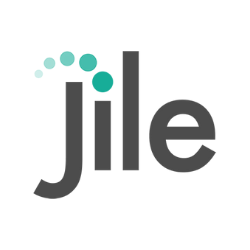Agile Roadmap for Product Development

Agile Roadmap for Product Development
The agile methodology for product development has been hailed as the best way to successfully plan and execute a project related to product development. The software industry, in particular, has embraced agile methods with great success. However, that doesn't mean it's always easy - there are many challenges faced by teams adopting this approach, such as managing stakeholder expectations and unforeseen changes. An agile roadmap holds the key to success here.
The word "agile" originates from the Latin word "agere", meaning "to act". In terms of product development, it means to do something in a quick and flexible manner without overthinking it. It's all about speed and results with little or no documentation.
Product development can be a daunting task, especially when you are trying to develop new products at the same time. One of the most important things that people don't realize is that product development should always start with research and analysis. It's not enough to just have an idea for a new product. You need to know what your customers want before you can effectively create something that they will enjoy using. This is where having a robust agile roadmap helps.
In this article, we will explore these questions and more, so you can apply the principles of Agile product roadmap for product development.
Emerging Project Management Trends of 2022
What is an Agile Roadmap?
A roadmap in agile is a strategic plan that outlines the key milestones and steps needed to achieve an objective.
It's important to note that, as with any roadmap, you need to know where you're going before getting started. The same goes for product development. We can't expect our team members and stakeholders to fully understand everything about the project without first telling them exactly what the objectives are.
Agile roadmap planning also helps everyone involved stay on track throughout the entire process, which means there's less chance for things to fall through the cracks.
An agile roadmap is an active document that should be
updated as needed.
Get Your Agile Basics Right, Read
Agile Basics
Key components of an Agile Roadmap:
- Objectives
- Milestones
- Tasks
- Resources Needed
- Risks & Assumptions
Now that we know what an agile roadmap is, let's take a look at how it can help us with product development.
Why use an Agile Roadmap?
The agile methodology is perfect for product development because it's all about adapting to change.
In the software industry changes are a fact of life. Whether it's due to new technology, customer feedback, or unexpected problems, things can and will change during the course of any project. The key is being able to adapt quickly and efficiently so that your team doesn't get bogged down by these changes. Here comes the role of an agile transformation roadmap.
An agile roadmap can help you do just that. By outlining the objectives, milestones, and tasks needed to achieve your goal, you give yourself a framework within which you can make adjustments as necessary, and on the go. This also helps keep everyone - including stakeholders - informed about what's going on and how their contributions are helping to move the project ahead.
Another reason why an agile roadmap is a good idea when developing new products is that it gives you a way to clearly communicate your plan with everyone involved in the process.
Who needs an Agile Roadmap?
Every team should have an agile roadmap, even if they're not working on software development. The more specific your goals are, the better off you'll be with the succinct sense of purpose and direction.
It's especially important to create one when developing new products! As mentioned before, customers can't use something that doesn't exist yet - this is why research is so important at the nascent stages of product development. To ensure your idea isn't completely off base, develop personas who might want or need what you're creating as well as scenarios in which people would actually use it. This helps keep everything grounded in reality.
How do you start an Agile Roadmap?
The following are the steps involved in creating a robust agile roadmap for the product development process:
-
Step 1: Start with a strategy (vision and goals)
Your agile roadmap should always start with a strategy. This means defining your vision and goals for the product.
What are you trying to achieve? How will this product fit into your overall business plan? What value does it provide to customers or users? These are just a few of the questions you need to answer before moving on to anything else.
-
Step 2: Identify main themes
After you've decided on your vision and goals, it's important to identify the main themes of the project.
What features does this product need so customers will get the most value out of it? What's the timeline for development and release? How much can we spend on this project if necessary? These are the questions you should ask yourself before moving forward.
-
Step 3: Tie user stories to strategic themes
Now that you know your main themes, it's time to create user stories for each of them.
User stories are typically written in the format of 'As a ____, I want ____ so that ____.'
As you write out your user stories (one per theme), be sure they adhere to some core principles:
- They should always align with your vision and goals for the product. If they don't, then why would we bother doing them? What value do they bring to our customers or users? How does this help us achieve what we set out to accomplish from step one?
- Make sure all user stories are specific and measurable - but not too detailed. We need something that's achievable without putting unnecessary constraints around how we might think about the product or project.
- Make sure they're not too generic and apply to multiple themes. Do avoid too vague user stories or objectives for that matter that wonât give you any useful information for your agile transformation roadmap.
-
Step 4: Create definitive but flexible estimates
Now that you've identified your main themes and created user stories for each, it's time to estimate how much work is involved for completing them.
Depending on the size of your project, this could be anywhere from a couple of hours up to days or weeks. It all depends on what type of product development process we're engaged in (agile or waterfall). For an agile roadmap, we would recommend no more than two to four hours per theme, depending on the complexity. For larger projects, break down these estimates into smaller chunks, so they're easier to manage during development. This will help ensure things don't get too much out of control if Agile developers run into unforeseen issues along the way, which can cause delays - not something anyone wants when building new products.
-
Step 5: Create your roadmap timeline
The final step in agile roadmap planning is to put everything together and create a timeline for your product development.
Start by putting your main themes in order of priority. We've already identified these as our 'vision' and 'goals' but you can do this however you want. For example, the first thing we would put on is making sure all features align with our vision/goal, so customers understand how it could benefit them. After that, perhaps we'll think about what other information might be important for us to include (like cost constraints or timeframes).
Once you have your theme list prioritized, then work backward from there to determine timelines for each user story based on estimates. When creating timeline markers like this, make sure they're loose enough, where if something goes wrong during development - you don't end up getting stuck further down the line and not knowing where to go. This is the best way to avoid wasting time and getting bogged down in project details.
Tips for Agile Product Roadmaps
One of the great things about agile roadmaps is that they're flexible. However, there are a few tips we like to use that can help ensure your product gets off on the right foot and stays productive throughout development:
- Make sure themes create an end goal for customers - not just developers
- Keep your agile roadmap visible to everyone on the team
- Be prepared for changes - they're inevitable
The Challenges to Agile Roadmapping
There are a few things you need to keep in mind when developing a roadmap in agile. For example, we're driven by customer feedback and market trends and these can change at any time. This means if there's ever something that comes up where you need to pivot strategy on the fly, it will be more difficult compared to other product development processes (like a waterfall).
Another challenge is knowing what information should go into your user stories vs. how much detail needs to be worked out beforehand. You don't want too little or too much. The key here is understanding which features align most closely with customers' goals, so they remain engaged throughout the entire process of building new products for them
Summary
An agile roadmap is a great way to ensure everyone on your team knows what you're working towards and the steps required to make it happen. By following these tips, whether you work in an agency or for yourself - we know you'll be able to create better products by building trust with customers.
Thanks for subscribing to our latest blogs, thought leadership and other product updates!
Read our Privacy Notice to know more. You can opt-out of all communications anytime.
